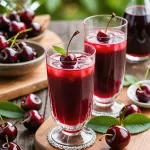Situation at a glance
Description of the situation
Between 1 January and 20 October 2024, over 7.3 million malaria cases and 1157 deaths (CFR 0.02%) were reported in Ethiopia, the highest number of annual cases recorded in the last seven years. Of the total cases reported in 2024, majority (95%) were laboratory-confirmed, with Plasmodium falciparum accounting for more than two-thirds of the cases. By contrast, in 2023, 4.1 million malaria cases including 527 deaths were reported, of which Plasmodium falciparum accounted for approximately 70% of all reported cases. Four regions accounted for 81% of the reported cases and 89% of health facility malaria deaths in 2024: Oromia (44% cases; 667 deaths), Amhara (18% cases; 56 deaths), Southwest (12% cases; 250 deaths) and South Ethiopia Regional State (7% cases; 45 deaths). Due to favourable geo-ecological conditions, the Western part of the country is experiencing a high malaria burden and is highly affected by the current unprecedented surge as shown in the incidence map for week 42. (Figure 1)
Figure 1: Geographical distribution of Malaria cases as of 20 October, 2024 
Nationally, a total of 222 high-burden districts (woredas) were identified for targeted intervention. Although these districts represent only 20% of the country’s total districts (woredas), they accounted for more than 75% of the national malaria burden in 2023. Among these districts, 50 are reported to be partially accessible due to protracted conflicts in these areas.
Males account for 56% of outpatient cases and 52% of inpatient admissions. Children under five years old account for 16% of outpatient cases and 25% of inpatient admissions. The high movement of seasonal migrant workers, (the majority of whom are adult males) to the high malaria endemic areas and the highly seasonal pattern of malaria in the country may have contributed to the observed age and sex distribution.
From 2020 to 2024, there has been an increase in the number of annual cases reported, as well as the persistence of outbreaks beyond the expected transmission season. Typically, malaria peaks occur between September and December following the primary rainy season (which occurs from June to September), and April to May after the secondary rainy season (which occurs from February to May). Despite the 2023 major malaria transmission season ending in December, outbreaks have persisted in numerous regions, characterized by surges in the number of cases observed during the secondary transmission season of 2024.
Figure 2. Weekly trend of malaria cases in Ethiopia, 01 January 2021 to 13 October 2024
Source: Weekly PHEM/IDSR data, EPHI
Epidemiology
Malaria is a life-threatening disease caused by parasites that are transmitted to people through the bites of infected female Anopheles mosquitoes. Malaria transmission is also possible through blood transfusion, organ transplantation, or the sharing of needles or syringes contaminated with infected blood. Malaria can also be transmitted from mother to child before or during delivery.
There are five parasite species that cause malaria in humans, of which two of these species pose the greatest public health threat, namely Plasmodium falciparum and Plasmodium vivax. Both parasite species are reported in Ethiopia.
The first symptoms, fever, headache, and chills – usually appear within 10–15 days after the infective mosquito bite and may be mild and difficult to recognize as malaria. Left untreated, malaria can progress to severe illness and death within a period of 24 hours.
Since the early 2000s, Ethiopia witnessed significant reductions in malaria-related cases and deaths. No major epidemics were reported apart from smaller-scale outbreaks and seasonal case fluctuations. In 2019, Ethiopia recorded its lowest-ever malaria case count, with approximately 900 000 cases reported, in the context of strong program implementation, improved surveillance, roll-out of malaria interventions, and community health extension program. However, towards the end of 2021, the country began experiencing a resurgence of the disease. Starting in 2022, malaria epidemics have been reported across most regions, accompanied by a notable upward trend in cases year-over-year (Figure 2). Approximately 3.3 million confirmed malaria cases were reported in 2022, compared to 1.3 million in 2021. In 2023, 4.1 million malaria cases including 527 deaths were reported, of which Plasmodium falciparum accounted for 70% approximately of all reported cases. Additionally, there has been a shift in malaria stratification, with an increase in the number of areas classified as endemic in 2022 compared to 2020.
Public health response
WHO is providing support to the Ministry of Health (MOH) in coordinating malaria response efforts through integrated platforms alongside a multi-emergency incident management structure. The key interventions include:
- Coordination and leadership: MOH, with support from WHO and other partners, is coordinating malaria response efforts through the activated Incident Management System (IMS). Technical assistance has been provided to establish the national and regional malaria Emergency Operations Centres (EOCs). A national coordination meeting is held weekly with updates from the Regional Health Bureaus (RHBs).
- Supplies and last mile deliveries: The health sector and WHO provided the required logistics to deliver health supplies. WHO has allocated substantial quantities of malaria kits and supplies to RHBs and partners. Between 2022 and 2023, WHO procured and distributed over 636 metric tons of malaria medicines and rapid test kits, worth US$ 2.26 million. Since the beginning of this year, WHO has dispatched 256 metric tons of Inter-Agency Emergency Health Kits (IEHK) of malaria drugs and medical supplies, valued at over US$1.4 million, to the most affected areas. Additional supplies are being prepared for donation to the government.
- Deployment of technical experts: The government of Ethiopia deployed and supported the response at sub-national levels for the affected regions. In addition, since January 2024, eight technical experts from WHO have travelled to the Oromia, Amhara, and Southwest regions. Two experts are currently responding to the malaria outbreak in the Oromia region.
- Partner mobilization: WHO, as the Health Cluster lead agency, works closely with Health Cluster partners to ensure that supplies effectively reach their final destinations.
- Advocacy and resource mobilization: There are ongoing efforts to engage with international agencies and identify relevant funding opportunities. Despite these efforts, there remains a significant funding gap that limits the ability to scale up the response rapidly and effectively as needed. The health system is under pressure from multiple concurrent emergencies, straining resources. Major challenges include the displacement of healthcare workers, damaged and dysfunctional health facilities, and limited road access to hotspot areas due to conflict, leading to shortages of malaria diagnostic tools and medications in affected areas.
WHO risk assessment
Malaria poses a significant public health challenge in Ethiopia, with approximately 75% of the country’s landmass considered malaria-endemic, and around 69% of the population residing in these areas facing the risk of infection. Ethiopia’s susceptibility to malaria epidemics stems from its pronounced climatic, topographic, and demographic disparities, influencing the risk of malaria across different regions. Typically, malaria peaks occur between September and December following the primary rainy season (which occurs from June to September), and April to May after the secondary rainy season (which occurs from February to May).
Historical data reveal significant malaria outbreaks, such as the devastating 1958 epidemic, which affected approximately three million individuals with 150 000 deaths reported, covering a substantial portion of the highland area. Subsequent major epidemics have occurred at intervals of about five to eight years, including widespread outbreaks in 1998 and localized yet severe outbreaks in 2002/2003. While strides were made in reducing malaria-related fatalities and cases post-2003, a resurgence of the disease occurred towards the end of 2021, with epidemics reported across various regions since 2022. Alarmingly, the annual malaria caseload and related admissions and deaths have surged, even with suboptimal reporting completeness in conflict-affected regions suggesting likely substantial underestimation in the numbers affected between 2022-2024.
The increasing trend in the number of annual cases and endemic areas are likely influenced by reduced vector control efforts, exacerbated by acute and protracted conflicts affecting some Regional States. Ethiopia currently has a significant number of internally displaced persons (IDPs), many of whom reside in the host community. As of May 2024, Ethiopia recorded 3.3 million IDPs across 2739 sites, with 68.7% displaced by conflict and 16.5% by drought. The Somali region hosts the largest drought-affected IDP population, with 397 913 individuals (73.1% of the national drought figure).[1] These conflicts, particularly in Oromia and Amhara, are protracted, posing a risk of reversing decades of progress against malaria. The majority of the population, previously protected by effective malaria control measures, has lost partial immunity due to the discontinuation of these measures.These populations face additional risks due to poor housing structures and inadequate long-lasting insecticidal net (LLIN) coverage. There are also large populations of returnees without adequate vector protection. Refugees from neighboring countries annually contribute to the situation. Ethiopia currently hosts over one million refugees, with about 50% residing in the highly malaria-endemic Western Lowlands. The surveillance system is suboptimal in conflict-affected areas, hindering a full understanding of transmission dynamics. Delayed testing and treatment, particularly in conflict-affected areas, have resulted in avoidable mortality. Insufficient funding support further complicates efforts to address the malaria situation adequately. This vulnerability increases the risk of severe malaria outbreaks, especially in remote and hard-to-reach communities.
The national risk level for malaria in Ethiopia is high due to multiple factors: the spread of Anopheles stephensi, which thrives in urban and man-made areas, weather anomalies from El Niño/La Niña, drought and food insecurity, ongoing conflict, and poor security. Large numbers of IDPs and returnees with inadequate housing and LLIN coverage, as well as over one million refugees (50% in malaria-endemic Western Lowlands), add to the risk. Suboptimal surveillance, especially in conflict zones, delays testing and treatment, increasing mortality.
The regional risk is moderate due to concurrent malaria and other vector-borne disease outbreaks in six neighboring countries: Djibouti, Eritrea, Kenya, Somalia, South Sudan, Sudan. These nations face challenges with limited resources and response capacities to effectively manage these outbreaks’ burden.
WHO advice
WHO recommends malaria prevention tools and strategies, including effective vector control and the use of preventive antimalarial drugs, which have a major impact on reducing the global burden of the disease. Preventative measures to reduce malaria transmission include the use of long-lasting insecticidal net (LLINs) and indoor residual spraying (IRS).
Early diagnosis and treatment of malaria reduces disease severity, prevents deaths, and contributes to reducing onward malaria transmission. WHO recommends that all suspected cases of malaria are confirmed using parasite-based diagnostic testing (either microscopy or a rapid diagnostic test). Diagnostic testing enables health providers to swiftly distinguish between malarial and non-malarial fevers, facilitating appropriate treatment.
Strengthening malaria surveillance also helps to identify high-risk areas or populations prone to infection, enables the monitoring of changing disease patterns, and assists in designing effective public health interventions. Continued delivery of key public health messages on reducing the risk of malaria transmission among the population is expected.
Based on the information available for this event, WHO does not recommend any general travel or trade restrictions to Ethiopia.
Further information
- WHO Malaria fact sheet: https://www.who.int/news-room/fact-sheets/detail/malaria
- WHO Malaria Report: https://www.who.int/teams/global-malaria-programme/reports/world-malaria-report-2023
- Ethiopia Malaria facts: https://www.severemalaria.org/countries/ethiopia-0
[1] International Organization for Migration (IOM). DTM Ethiopia: National Displacement Report 19 (Nov 2023 – May 2024). Ethiopia — National Displacement Report 19 (November 2023 – May 2024) | Displacement Tracking Matrix
Citable reference: World Health Organization (31 October 2024). Disease Outbreak News; Malaria in Ethiopia. Available at: http://www.who.int/emergencies/disease-outbreak-news/item/2024-DON542












